It was obvious really that Cannondale would choose a World Cup venue and race weekend to launch its new flagship XC hardtail and super, dooper new and improved Lefty fork. But on account of not being a top international XC rider there was going to be a major drawback of whether I was going to have sufficient fitness and technical ability to ride the infamous Albstadt course, let alone do a bike like the F-Si any justice. Trying not to be put off by Chipps’ and Hannah’s “take care” wishes and warnings, I gallantly headed off to Germany complete with knee pads and first aid kit and hoped for the best.
Oh, and then it rained torrentially for the two days before we arrived just to add a little more challenge to the riding.
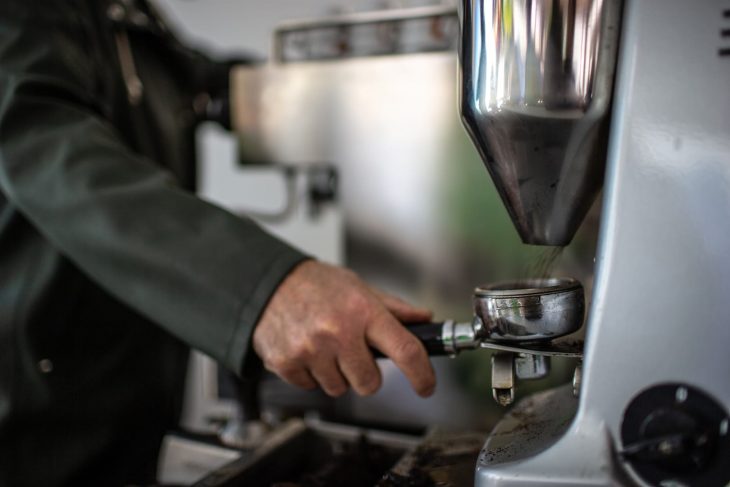
Despite the contest ahead I was really looking forward to getting stuck into the bike and the course. As an owner of the current Scalpel model that shares the angles and lengths of the previous F-Si, I’m already well acquainted to Cannondale’s modern geometry approach to XC bikes. If you haven’t ridden one of the newer generations of hardtails or full-suss race bikes (from any brand) you really should – they’re capable of so much more than you probably think and are a damn sight easier to pedal than a trail bike too. Especially when you get the privilege of riding the top end World Cup build weighing a measly 8.4kg for the medium.
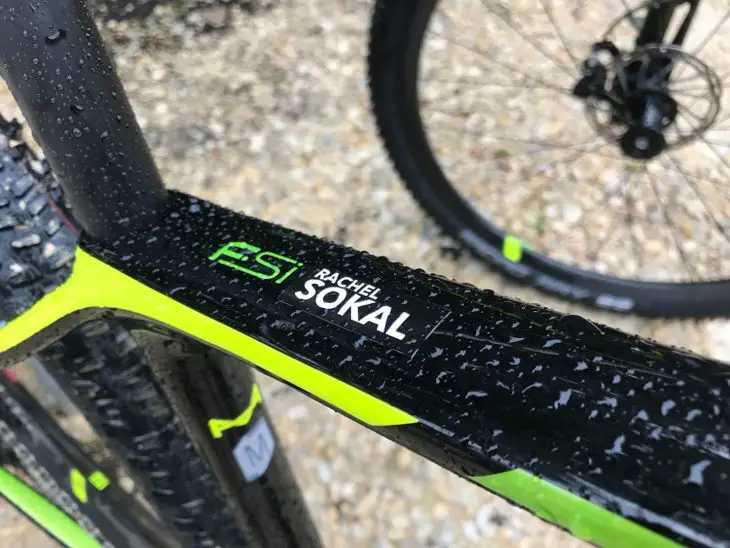
The changes in the F-Si over the previous model are actually quite modest – it’s a little longer and slacker at the front, tighter at the back and stiffer or more flexible in all the right places – and probably ones that I wasn’t going to appreciate in the slop and slime of the Albstadt course. I was really looking forward to seeing how the new Lefty Ocho would perform though. There are in depth run downs for both the F-Si and Lefty if you want to know more about these changes.
With minimal tweaking of saddle height and position and setting the fork to the recommended pressure and rebound for my riding weight I was ready to ride. Perhaps it shouldn’t be surprising as I own a Scalpel but I was still impressed by how good the F-Si felt with minimum set up effort, I’m usually much more of a tweaker and faffer before I feel happy on a bike.

I’d like to say the lightest and stiffness of the bike meant that I shot off up the climbs. In reality the steepness of the trails, squelchiness of the newly cut track and my sub-optimal fitness meant that it was more of a plod. As plods go though it wasn’t too unpleasant and there was definitely a noticeable feeling of what little oomph I could get out of my legs into the pedals was going straight into turning the wheels and grinding me up the hill.
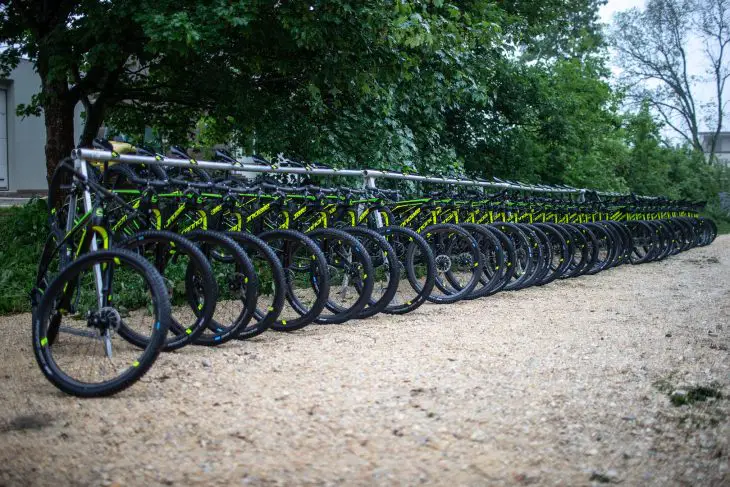
On the first lap round I struggled to keep the front end planted on climbing as the bike was a bit long for me (I’m typically on the smaller end of the height range for a medium). A quick swap from an 80mm to 70mm stem easily solved this and the bike and I tracked much more happily up the tight switch-backed ascents. Even at the steepest points I didn’t find myself having to dramatically move my body weight forward and drop my elbows to keep things moving.
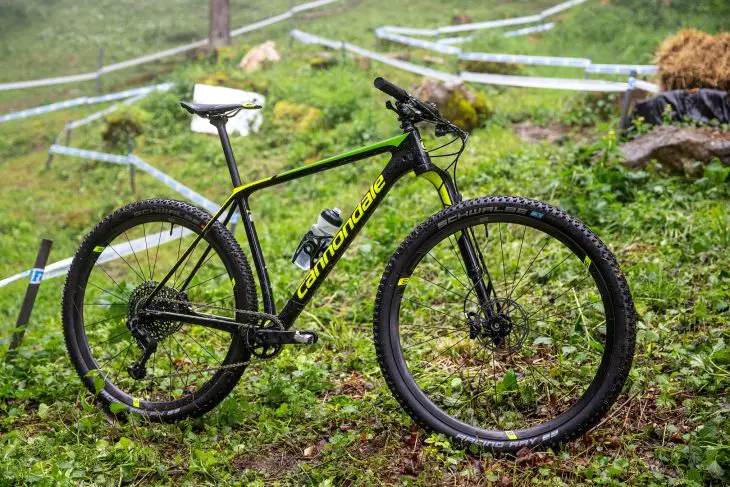
Given the course and conditions it was with a fair amount of trepidation that I turned into the first sharp and cornered descent (the number of people hanging around watching each other’s carnage didn’t help). But the long and slack angled front end did its job and it was with relative ease that I tracked my way down the muddy, rooty and twisting trail. Not to blow my own trumpet too much here, but I was surprised to see that on a couple of the sections that I comfortably cleared some of the pros were taking a more cautious or stumbled approach. I’m sure that the majority of my ability came from the stability of the bike rather than any chance of a superior skill set (and I’m going to quickly overlook the fact that many of the pros were riding the A-lines that would make me nervous on my full-suss trail bike).
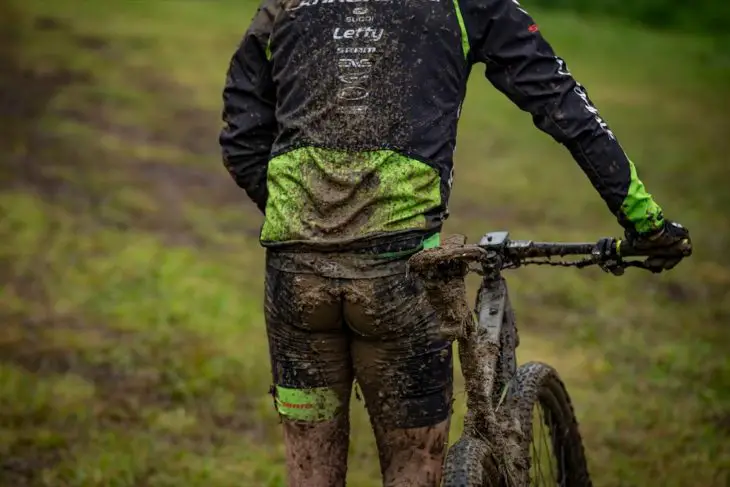
The more confident I became with the bike and the more I embraced the sliding under tyre which comes with riding in the filth on a low tread XC race tyre, the more capable the F-Si became. It’s definitely a bike that improves when you just let the brakes off and get on with having fun. Yes, you can steadily track your way round the tight corners on descents but the F-Si also lets and rewards you for letting it all go and steering with your hips round the bends. This is not to say that I didn’t repeatedly find the limit of my ability and grip in the low friction conditions, but I had an awful lot of fun in doing so.

It was half way round the second lap that I finally had enough spare brain capacity that I started to think how the new Lefty Ocho fork was performing. It worried me a bit that I hadn’t really noticed a great deal but then I realised what that meant. Despite the utter sketchiness of the conditions and the steep and technical sections it had just got on with it all and coped without fuss with the repeated drops, roots and ruts. As a direct comparison after a year and a lot of riding I’m still to get my Lefty 2.0 set up to have both good small bump sensitivity combined with the bigger hit stability I’m after. Far too often I land off a drop and dive through to the bottom of the travel or have to offset this with more pressure and rattle my teeth as a result. I’d always thought that was that I hadn’t found the sweet spot of tuning but having now ridden the Ocho and discussing the differences with Cannondale’s head of suspension, Jeremiah Boobar, I realise that it’s actually more to do with some of the limitations of the previous Lefty than my set up skills. By reducing the internal friction, the dampener in the Ocho is much more sensitive and has much more control throughout the fork’s travel. I’m not sure whether to be impressed or just annoyed that I have the older version at home.
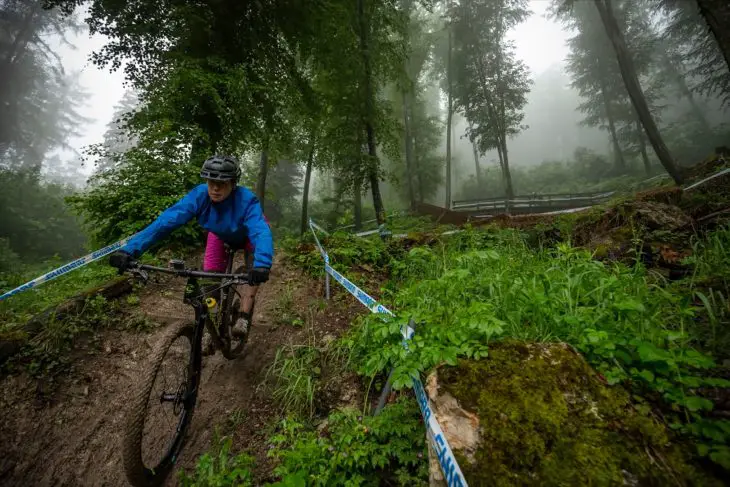
As you’ll have gathered, despite the conditions limiting quite how much I could get a proper feel for the F-Si and Lefty Ocho I’ve come away with a very good impression. The F-Si is light, comfortable, reactive and very confidence inspiring but the impressiveness of the bike is really nothing compared to that of the new fork. I’m really looking forward to getting my bum on one of these in the UK to see how it performs on trails that are better matched to my fitness and technical ability. One thing I can confirm though is that the F-Si certainly has a tonne of mud clearance.
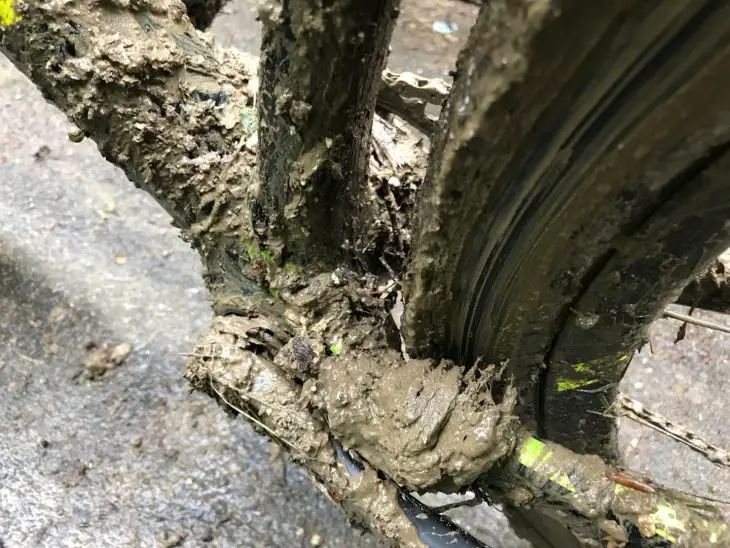
2019 Cannondale F-Si World Cup Specifications
- Frame // Hi-MOD BallisTec Carbon Fibre
- Fork // Lefty Ocho Carbon, 55mm Offset, 100mm Travel
- Hubs // Lefty 60 110x15mm Front & DT Swiss C36 148x12mm Rear
- Rims // ENVE M525 Carbon, 24h, Tubeless Ready
- Tyres // Schwalbe Racing Ray 2.25in Front & Racing Ralph Rear, SnakeSkin, Addix Speedgrip
- Chainset // SRAM XX1 Carbon, Ai Custom, 34t Chainring
- Rear Mech // SRAM XX1 Eagle, 12-Speed
- Shifter // SRAM XX1 Eagle, 12-Speed
- Cassette // SRAM X01 Eagle, 10-50t, 12-Speed
- Brakes // SRAM Level Ultimate, 160mm Front & Rear Centrelock Rotors
- Bar // Cannondale C1 Flat, Carbon, 8° sweep, 760mm Wide
- Stem // Cannondale C1, 7075 Alloy, 31.8mm Diameter, 1.125in Steerer Tube Clamp
- Grips // Cannondale Lock-On
- Seatpost // Cannondale C1 Full Carbon, 27.2mm Diameter
- Saddle // Prologo Zero II, Tirox rails
- Size Tested // Medium
- Sizes available // Extra Small, Small, Medium, Large & Extra Large
- RRP // £6,999 GBP
Disclaimer
Rachel’s travel and accommodation were paid for by Cannondale.
Comments (4)
Leave Reply
Post Comment


That’s an impressive line up of £7k bikes!
Sounds tasty.
New tyres as well?
@alanclarke – good spot. It’s the new tread Racing Ralph on the rear and the new Racing Ray (designed to be a front version of the Ralph) on the front.